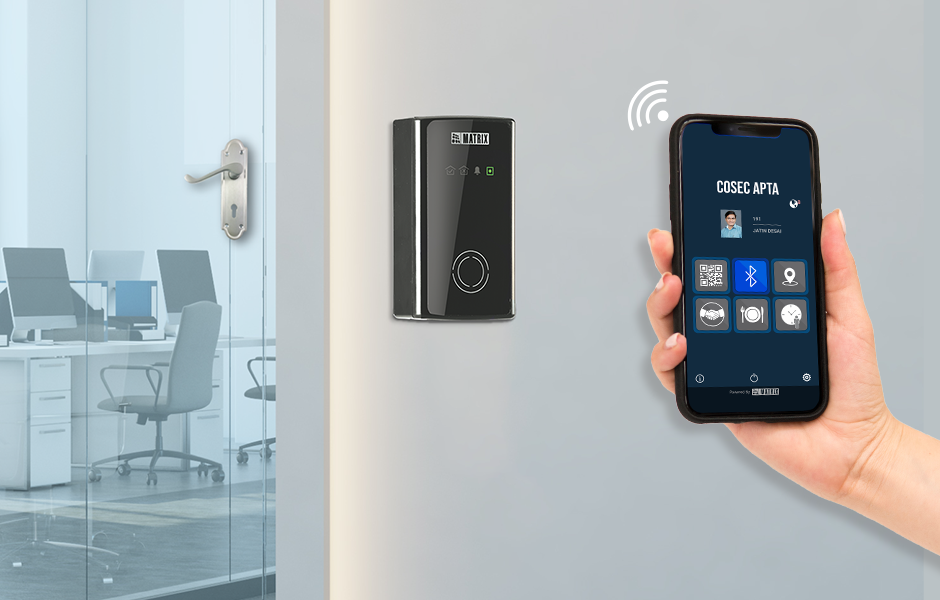To better prepare for the return to work, it helps to have keen insight into re-entry anxiety: what causes it, what exacerbates it, and how common re-entry anxiety will be in your office.
Re-entry anxiety is the term used to describe the fear employees experience when returning to work during COVID-19. It’s a new term, but its effects are very real and its grip on employees is overwhelming. One way to reduce re-entry anxiety is to make use of contactless technology as a core element for your return to work strategy.
Shift Focus
Now that you – and your employees – better understand the sanitation requirements involved in stopping the spread, you can shift your focus to adapting smart mechanisms of safekeeping. Doing this will give your COVID-19 protocols greater longevity.
Smart mechanisms indicate the use of technology to help prevent – or at the very least – minimize the spread of COVID-19. It is through these smart mechanisms, or contactless tech, that you’re better able to maintain the recent changes to office protocols.
Additionally, you reduce the stress of remembering several different safety protocols by simplifying the process through gamification.
It’s always good to remember that tech makes work feel more convenient. Therefore, you can use that same sense of support your employees receive from their smart home improvements to create a smart office.
Identify High-Risk Areas
To ensure your contactless tech is useful, it needs to be purposeful. Accordingly, for your return to work strategy, identify your high risk or high traffic areas.
By identifying your high-risk areas and items, you simplify the search to find tech that can adapt to your office’s current needs.
Meeting rooms can be high risk, elevators are high traffic, common areas are both high risk and high traffic. Any place where employees can either meet or will share items has the potential of becoming a high-risk area.
Once you’re equipped with a list of the high-risk and high traffic areas within your office you need to find contactless tech that reduces that risk or diminishes it entirely.
Contactless Technology To Use In Your Office
Now that you’re adapting to your new normal, and finding tech to replace items or upgrade sections that could be high-risk, this is a list of contactless technology you should look to implement first.
Remote-Use Technology
Most communal appliances like coffee machines, vending machines, or printers are high-risk because they require frequent handling to operate. You can eliminate handling by enabling remote-use technology. Remote-use technology enables employees to access the equipment from an app or employer-issued device.
If touching is unavoidable, consider the use of individual stylus pens to control touch screen communal items.
Access Control
The access points throughout your office are another high-risk area. Having to enter a pin on a keypad that could have been touched by someone who may be infectious can exacerbate re-entry anxiety.
Therefore, you can reduce re-entry anxiety and increase safety by making access control to spaces within your building reliant on digital badges. These digital badges communicate with access controls throughout your office. To emphasize safety, you can require employees to conduct a self-assessment of their health to gain access to the space.
Wayfinding
Because fewer employees will be in the office on any given day, the need for designated desks could be redundant. Wayfinding technology can display in real-time which desks and meeting areas are available and enables employees to book, check, and track the flow of the office without requiring any physical contact. You can also allow employees to interact with your wayfinding tech through a remote application that syncs with the public system.
Conference Room Relay
Using a proximity beacon, employees gain access to meetings they are attending. Conference room relay systems work by connecting calendars, conference room systems, and the designated app, to enable a contactless meeting and give hands-free access to the meeting rooms systems.
In conclusion, you can divide re-entry anxiety into two categories:
- Employees who are anxious about getting COVID-19 and
- Employees who feel anxious because of the countless protocols and isolation brought about by COVID-19.
The one thing that has united us, even during a global pandemic, is tech. Technology has the means to make us connect while we social distance. Tech has the means to keep us entertained without us leaving our homes, and tech has the means to make your office safer without your employees feeling as though they’re living under a draconian law, and in the process reducing re-entry anxiety.
Download the Return to Work Playbook for more ways to reduce re-entry anxiety.

